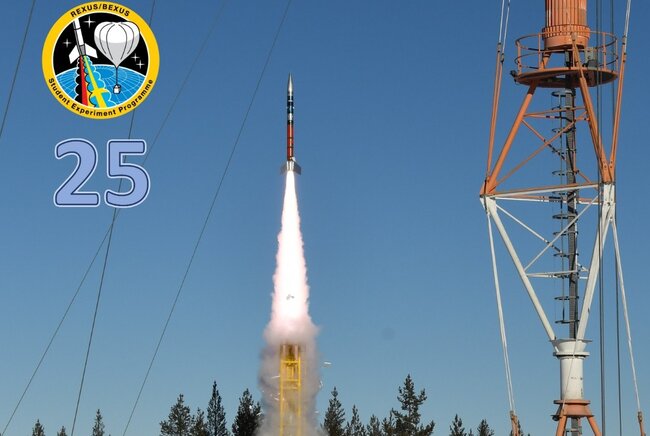Dutch student team of TU/e and RU selected for rocket experiment
Determining the live position of a rocket within a few centimetres during its entire flight. That is what a team of researchers and students from Eindhoven University of Technology and Radboud University Nijmegen are going to test during an experimental rocket launch in Sweden in March 2023. With their method - up to ten times more accurate than GPS - rockets may be better steered to land at the right place. They also measure the arrival direction of cosmic-rays.

The Eindhoven and Nijmegen team's experiment, called PR4 Space, is one of the projects selected to participate in the European program REXUS, an initiative of the Swedish, German and European (SNSA, DLR, ESA) space agencies. This involves two rockets going into the air each year, each carrying four to five experiments by student teams from different countries. "We passed the selection for the second time," says project leader and Radboud student Jan Stammes. "That is certainly not a usual matter as there are many teams competing throughout Europe. For example, there were also two teams from Delft that competed."
The rocket will be launched at Esrange, near Kiruna in northern Sweden. The rocket is expected to remain airborne for about fifteen minutes and reach an altitude of eighty to one hundred kilometers. PR4 Space's goal is to conduct two experiments during the flight: accurate positioning and radiation measurement. "In addition, this initiative is intended for students to become familiar with space travel and what protocols are involved," said student Daan Kapitein.
The location of the rocket is measured 1000 times per second
The method developed by the team for locating the rocket uses a technique called radio interferometry. In this technique, three antennas are used to transmit radio signals at slightly different frequencies from the rocket. These signals are picked up on the ground by six self-designed ground stations around the launch base. "Based on the phase difference between the arriving signals, we can recognize what the location of the rocket is," Stammes explains. "The new part is that we can track the rocket live with this new technique." The location of the rocket is measured 1000 times per second, determining it within a few centimeters - up to ten times more accurate than GPS.
With a detector we will determine the arrival direction of cosmic-rays.
In addition to determining location, the researchers will also experiment on the rocket with measuring radiation from space. "With a detector we will determine the arrival direction of cosmic-rays" said student Tom Reuvers. "In doing so, we are using the results of the radio interferometry experiment, so we know the location and orientation of the rocket very precisely at any time during the measurement. This is a step further than what we did last time. Then we focused on determining the amount of cosmic-rays. Later, we want to investigate whether there is a link between this radiation and cloud formation".
The team's achievements can be followed on Facebook and Instagram.
PR4 Space is a collaboration of research group Electronic Systems (Department of Electrical Engineering) of Eindhoven University of Technology, Radiolab of Radboud University and the European space agencies DLR, SNSB and ESA.
For more information:
Tom Reuvers, 06-83382716
Daan Kapitein, 06-22586260